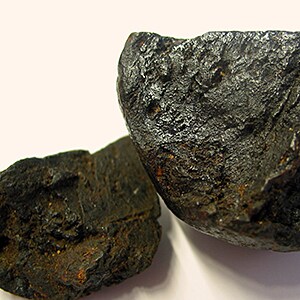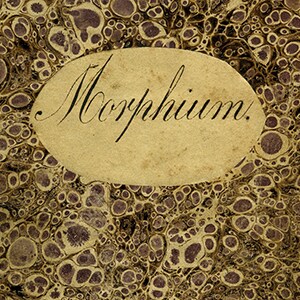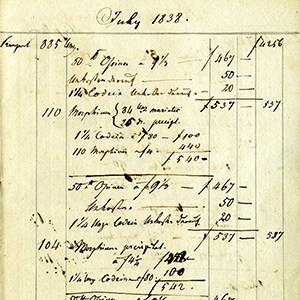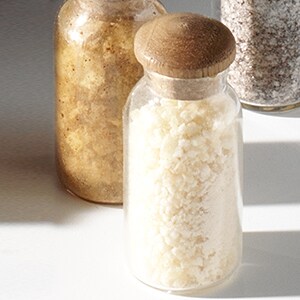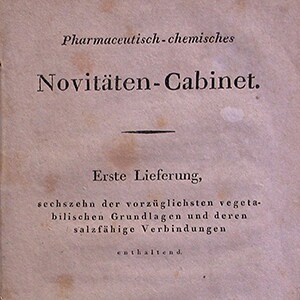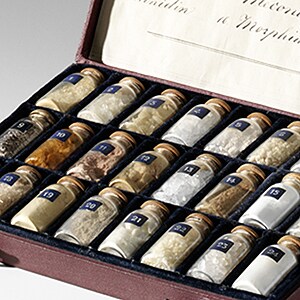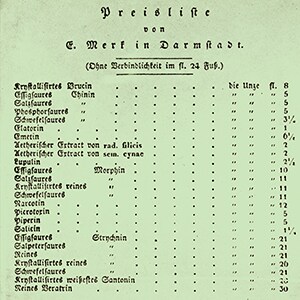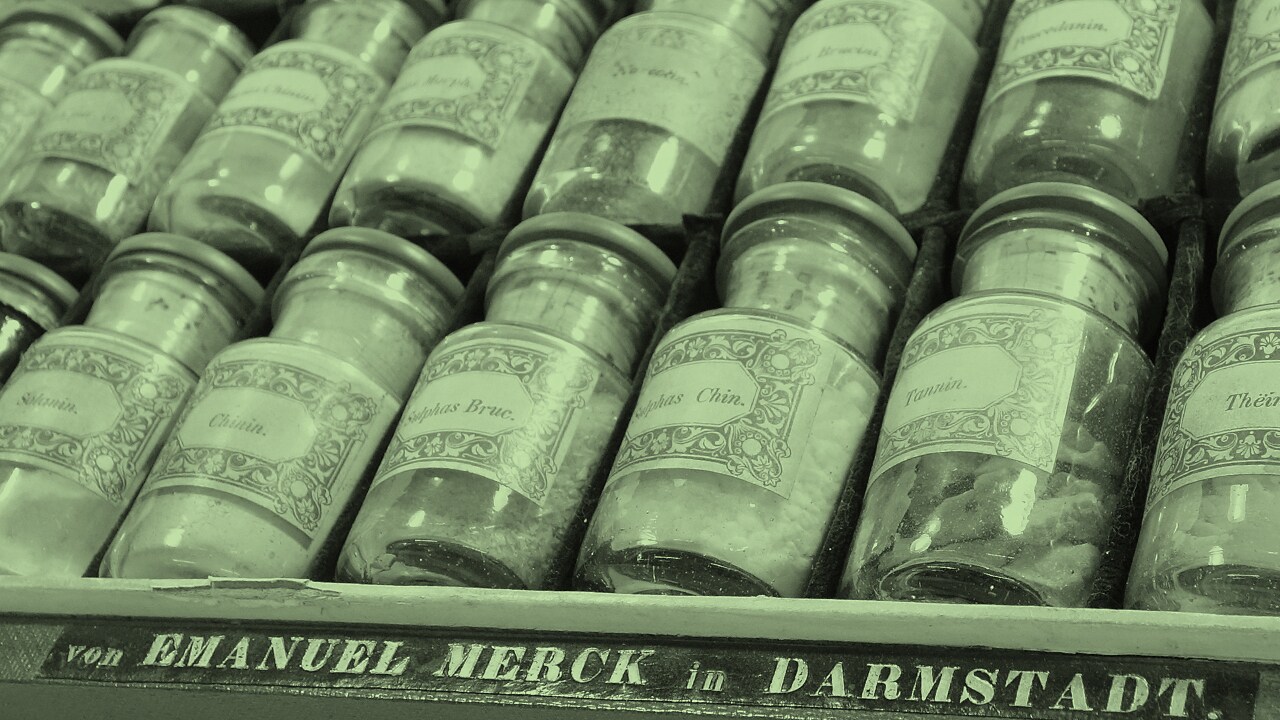
»I would rather take Merck [Darmstadt, Germany] morphine than any prepared by a stranger.«
Karl Friedrich Mohr, Commentar zur preußischen Pharmacopoe, 1849
Even during his early training, Emanuel Merck is already investigating natural plant substances. Due to their medicinal effect, alkaloids have long attracted interest from the scientific community. In 1805, Friedrich Wilhelm Sertürner, the first person to isolate morphine from opium, lays the groundwork for this research. His discovery of the substance’s alkaline qualities contradicts the prevailing notion that plant-based agents are exclusively acidic in nature, initiating a major turning point in pharmaceutical research. This realization leads to French and German pharmacists isolating a number of alkaloids such as narcotine (noscapine), caffeine and quinine. A high degree of purity is essential for these often highly toxic substances to be properly dosed and safely utilized in therapeutic applications. In his pharmacy lab, Emanuel Merck succeeds in attaining this level of purity. In 1827, he publishes the »Cabinet of Pharmaceutical and Chemical Novelties«, marking his company’s first step from an apothecary’s shop to a research-based industrial enterprise.
But his work is not limited to opium alkaloids. Featuring 16 ultra-pure alkaloids and alkaloid salts for sale, this collection earns him a great deal of respect from the scientific community. It specifically includes morphine and its salts, narcotine (noscapine), quinine and cinchonine and their sulfates, lupulin, picrotoxin, piperine, emetine, strychnine, brucine, gentianin, and rhubarbarin.
Accompanied by a booklet detailing the extraction method for each alkaloid, the »cabinet«, according to the introduction, is intended to »increase the general knowledge of this class of remedies [...]« among chemists, physicians and pharmacists and »enable them to experiment with these substances at little cost«. As Emanuel explains, this is why he »saw fit to manufacture these materials in bulk«. This move represents the pharmacy’s transition to a manufacturing operation.
By offering a shrewd selection of analgesics, antipyretics, sedatives, anti-inflammatory drugs, and medicines to treat bronchial and gastrointestinal complaints, Emanuel Merck is providing remedies for major therapeutic indications – even though the individual substances’ effects on organisms and their toxicity has yet to be fully established.
Emanuel Merck’s product range is therefore highly diversified from the very outset. He is determined to extract and sell the entire array of known alkaloids. In terms of quantity, however, morphine initially accounts for the largest share ofproduction. Its widespread proliferation is beneficial because physicians can now successfully and safely treat intense pain.
Friedrich Wilhelm Sertürner’s discovery of morphine represents not only an invaluable scientific advance in chemistry with far-reaching consequences, but also triggers a gradual but permanent realignment within the field of pharmacy starting in the 1830s.
As doctors increasingly begin prescribing compounds containing alkaloids, many pharmacists face the issue of spending a disproportionate amount of time and effort to produce the highly potent plant substances needed for the formulation – if they can even produce them at all. This makes Emanuel Merck’s »Cabinet of Pharmaceutical and Chemical Novelties« even more attractive.
Having gained practical experience from running his own pharmacy, Emanuel Merck has tremendous scientific expertise and the technical possibilities to produce such substances in a consistently high quality. His alkaloids, particularly morphine, are a great success.

